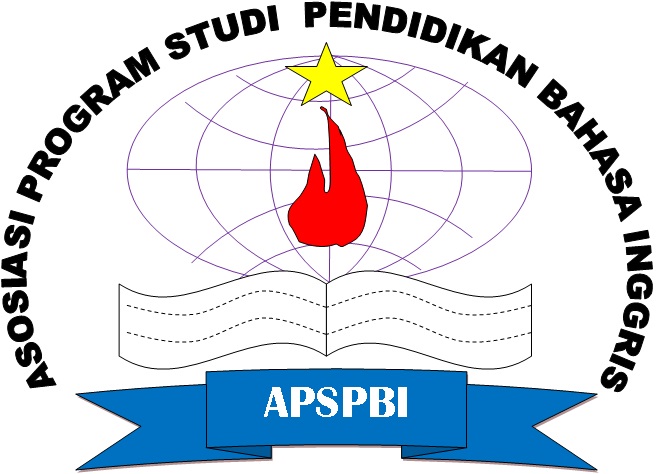Students’ writing strategies in accomplishing final exams: lessons learned from an Islamic higher education institution
DOI:
https://doi.org/10.28918/erudita.v2i1.5302Keywords:
Brainstorming, Final exam, Free writing, Undergraduate EFL students, Writing strategyAbstract
This present study aims to describe tertiary students’ writing strategies and their response in accomplishing final exam. Grounded in a qualitative approach by using case study as the research design, 27 undergraduate students of an Islamic higher education institution volunteered to participate. Data were collected through semi-structured interview and documentation. The data were analyzed by reducing and transforming the data, then drawing conclusion. The study findings showed that the undergraduate students employed two types of writing strategies, i.e., free writing and brainstorming. There were 20 students using free writing strategy, and seven of them using brainstorming strategy. Most of them shared their positive responses in using the writing strategies, such as the feeling of happy and comfortable in accomplishing final exam. They narrated that using free writing strategy was very helpful to write an article journal better and more structured. On the contrary, there were also some EFL students who showed negative responses, e.g., the feeling of dizzy, lazy, and difficult to draft their ideas. This study recommends some empirical insights on how university teachers and faculty members manage final exams to accelerate students’ writing strategies.
References
Ahmed, A. M. (2019). Students’ reflective journaling: An impactful strategy that informs instructional practices in an EFL writing university context in Qatar. Reflective Practice, 20(4), 483-500. https://doi.org/10.1080/14623943.2019.1638246
Alqhatani, M. (2015). The important of vocabulary in language learning and how to be taught. International Journal of Teaching and Education, 3(3), 21-36. https://doi.org/10.20472/TE.2015.3.3.002
Anggraini, F. (2020). Brainstorming technique in teaching writing descriptive text. Channing: Journal of English Language Education, 5(2), 71-74. https://doi.org/10.30599/channing.v5i2.840
Ary, D., Jacobs, L. C., Sorensen, C. K., & Razavieh, A. (2010). Introduction research in education (8th ed.). Wadsworth Cengage Learning.
Baker, L. (2014). Longman academic writing series 2: Paragraph (3rd ed.). Pearson Education, Inc.
Blanchard, K., & Root, C. (2003). Ready to write: A first composition text (3rd ed.). Pearson Education, Inc.
Brizee, A., & Tadriff, A. (2010). Four main components for effective outlines. Purdue Online Writing Lab.
Broadman, C. A., & Jia, F. (2008). Writing to communicate: Paragraph and essays. Pearson Longman.
Brown (2000). Teaching by principles an interactive approach to language pedagogy (2nd ed.). Pearson Education, Inc.
Cekiso, M., Tshotsho, B., & Somniso, M. (2016). Exploring first-year university students’ challenges with coherence writing strategies in essay writing in a South African University. International Journal of Educational Sciences, 12(3), 241-246. https://doi.org/10.1080/09751122.2016.11890431
Chien, S-H. (2012). Students’ use of writing strategies and their English writing achievements in Taiwan. Asia Pacific Journal of Education, 32(1), 93-112. https://doi.org/10.1080/02188791.2012.655240
Donald, G. (2008). Teachning reading and writing: A guidebook for tutoring and remediating students. Rowman and Littlefield Education.
Dwiagustini, R., Sari, N., Susilawati, & Nisa, B. (2021). Fostering students’ writing skill by the integration of Mall application. JOLLT (Journal of Languages and Language Teaching), 9(1), 34-43. https://doi.org/10.33394/jollt.v%vi%i.3264
Elmahida, H., Nia, D. P., & Komariyah, T. (2021). Exploring teachers’ strategies in teaching writing for young learners. Erudita: Journal of English Language Teaching, 1(1), 65-75. https://doi.org/10.28918/erudita.v1i1.4274
Fitzpatrick, M. (2005). Engaging writing. Longman.
Guo, X., & Huang, L-S. (2020). Are L1 and L2 strategies transferable? An exploration of the L1 and L2 writing strategies of Chinese graduate students. The Language Learning Journal, 48(6), 715-737. https://doi.org/10.1080/09571736.2018.1435710
Hacker, N. S. (2012). Rules for writers (7th ed.). Harvard University.
Hwang, J. A. (2010). A case study of the influence of freewriting on writing fluency and confidence of EFL college-level students. Second Language Studies, 28(2), 97-134. http://hdl.handle.net/10125/40706
Harmer, J. (2007). The practice of English language teaching. Pearson Education, Ltd.
Hidayah N., S. U. (2014). Improving the eighth grade students’ ability in writing simple descriptive paragraph through mind mapping technique. e-Journal of ELTS (English Language Teaching Society), 2(2), 1-13. http://jurnal.untad.ac.id/jurnal/index.php/ELTS/article/view/3032
Ahmadi, A. (2009). Psikologi sosial [Social phsycology]. PT. Rineka Cipta.
Klimova, B. (2013). The importance of writing. Paripex Indian Journal of Research, 2(1). https://www.worldwidejournals.com/paripex/article/the-importance-of-writing/Mjg0MzA=/?is=1&b1=13&k=4
Langan, J. (2008). College writing skills with readings. McGraw-Hill.
Li, L. Y. (2007). Exploring the use of focused freewriting in developing academic writing. Journal of University Teaching & Learning Practice, 4(1), 46-60. https://doi.org/10.53761/1.4.1.5
Madina T., Manshuk Y., Aigul, N., & Peter, E. (2015). Applying freewriting as a technique for developing Kazakhstani university students' writing skills in English. The Social Sciences, 10, 1193-1199. https://research.nu.edu.kz/en/publications/applying-freewriting-as-a-technique-for-developing-kazakhstani-un
Mehrali, C. (2015). The comparison of fourth grade students’ essays based on free and guided writing techique in terms of the quality of written expression. Educational Research Review, 10(4), 444-452. https://doi.org/10.5897/ERR2014.1969
Moleong, J. L. (2017). Metodologi penelitian kualitatif [Qualitative research methods]. PT. Remaja Rosda Karya.
Muhammad, A. F. (2010). Improving the ability of English department students of Kanjuruhan University of Malang in writing descriptive essays through premora (Pre-writing monitored reading activities) [Master’s thesis, Universitas Negeri Malang]. Universitas Negeri Malang Repository. http://karya-ilmiah.um.ac.id/index.php/disertasi/article/view/9550
Muhib, A., Bharati, L. B., & Hartono, R. (2014). Mind mapping and everybody writers techniques for students with high and low writing achievement. English Education Journal, 4(2), https://journal.unnes.ac.id/sju/index.php/eej/article/view/6666
Nurlaili. (2018). Students strategies in developing writing thesis [Master’s thesis, Institut Agama Islam Negeri Curup]. E-Theses IAIN Curup. http://e-theses.iaincurup.ac.id/20/
Octavia, A. (2018). The influence of using facebook profile towards students’ writing ability in descriptive text at the first semester of the eighth grade at SMP Negeri 8 Pesawaran in the academic year of 2018/2019 thesis [Bachelor’s thesis, UIN Raden Intan Lampung]. UIN Raden Intan Lampung Repository. http://repository.radenintan.ac.id/5749/
Oshima, A. & Hogue, A. (2009). Writing academic English (3rd ed.). Addison Wesley Longman.
Oshima, A., & Hogue, A. (2007). Introduction to academic writing (3rd ed.). Pearson Education.
Oshima, H. (2010). Writing academic English (4th edition). Pearson Education, Inc.
Philippakos, Z. A. T. (2020). A yearlong, professional development model on genre-based strategy instruction on writing. The Journal of Educational Research, 113(3), 177-190. https://doi.org/10.1080/00220671.2020.1767531
Raimes, H. (2011). Teaching writing skill. Longman.
Ritter, S. M., & Mostert, N. M. (2018). How to facilitate a brainstorming session: The effect of idea generation techniques and of group brainstorm after individual brainstorm. Creative Industries Journal, 11(3), 263-277. https://doi.org/10.1080/17510694.2018.1523662
Rokhuma, C. M. (2017). The effect of “numbered heads together” vs “three minutes review” on students’ vocabulary mastery. Cakrawala Jurnal Pendidikan, 11(2), 125-134. https://doi.org/10.24905/cakrawala.v11i2.120
Stockall, N., & Cole, C. V. (2016). Hidden voices: L2 students’ compensatory writing strategies. Teaching in Higher Education, 21(3), 344-357. https://doi.org/10.1080/13562517.2016.1144586
Subkhan, M. A. (2016). The implementation of think talk write (TTW) in teaching writing to Xth grade students at SMAN 1 Ngawen Blora Academic Year 2015-2016 [Bachelor’s thesis, Universitas Nusantara PGRI Kediri]. Universitas Nusantara PGRI Kediri Repository. http://simki.unpkediri.ac.id/mahasiswa/file_artikel/2016/11.1.01.08.0130.pdf
Syahid, A. (2019). Writing strategies by beginning authors of academic genre. Journal of English as a Foreign Language, 9(1), 20-41. https://doi.org/10.23971/jefl.v9i1.952
Yang, H. (2014). Toward a model of strategies and summary writing performance. Language Assessment Quarterly, 11(4), 403-431. https://doi.org/10.1080/15434303.2014.957381
Zemach, D. E., & Carlos I. (2006). Writing in paragraphs. Macmillan.
Downloads
Published
How to Cite
Issue
Section
License
Copyright (c) 2022 Siti Aisyah Pranita, Muhammad Husin Al Fatah

This work is licensed under a Creative Commons Attribution-ShareAlike 4.0 International License.















